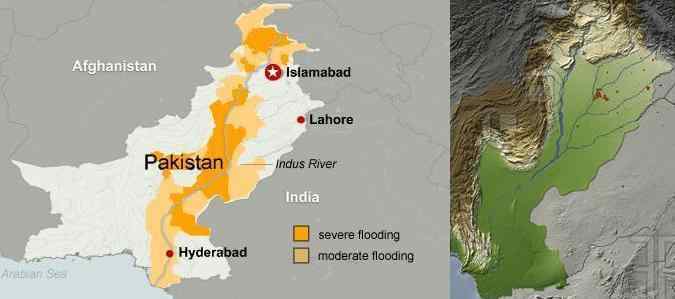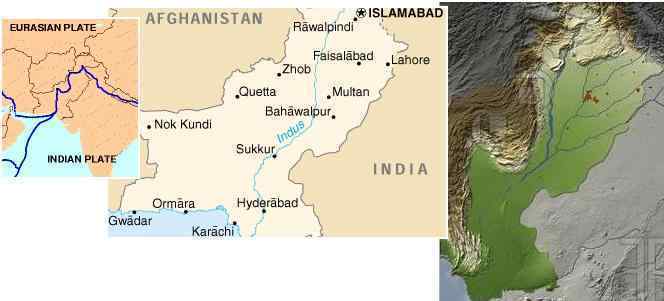
| |
 |
![]()
Pakistan borders India, which will be forced under the Himalayas in a violent subduction of the Indio-Australian plate, and its northern territories are within the Himalayas which will be subject to mountain building during this subduction. However, being situated on the foot of the Eurasian Plate, and bordering the southern fault line of this plate, Pakistan will not find itself subducted but it will be subject to what may seem like endless quakes due to the number of changes affecting the area. After the hour of the shift, Pakistan will find itself with a higher elevation above sea level, more ocean access as India to the east will be underwater, and additional ocean access from what we anticipate to be an inland bay cause by the ripping and sinking of the Eurasian Plate just to the west of Pakistan. Those who would survive are advised to stay out of structures during the hour of the shift and during the aftershocks that will continue for months. Tent living will be the best. Bone chilling cold will be the largest danger after the shift, as Pakistan will be literally within the polar circle. Take a clue from the Eskimos in how to dress and build homes, and take to fishing the oceans as a way of life. Due to the hostilities between India and Pakistan, we do not anticipate immigrants from India to flood there prior to the shift, but any of India's people who stay afloat may arrive on the shores of Pakistan, pleading for help.
ZetaTalk ™
The Indus River is one of the points on the Indian sub-continent that is being pushed under the Himalayas range, as a close look at where the mountain building along the northern edge of the Indo-Australian Plate occurs shows. We have pointed out that the mountains in the interior of India seem to disappear as one approaches the Himalayas, and that this is because it is there that the plate is being pushed down. We have predicted that as the tongue of the Eurasian Plate holding Indonesia is pushed under the eastern edge of the Indo-Australian Plate that this edge will lift, tilting the Indo-Australian Plate down on the western edge. This would first be noticed on land, especially land subject to being flooded, as such a change under the sea would escape notice unless a tsunami buoy sounded an alarm. What should be noted is that the flooding, ostensibly from rains, are worse than anticipated from the rains alone. What should be watched is how well the flood waters drain, and whether a drop in elevation is noted along the Indus River and its outlet into the Indian Ocean. The Earth changes we have predicted for this region have begun!
ZetaTalk ™

As the continent of India is pushed steadily down and under the Himalayas, lands in Pakistan that lie on the Indo-Australian Plate will participate. The plate border as it transverses Pakistan reflects this, with the Indus Valley on the Indo-Australian Plate being lowland, and the highlands to the west on the Eurasian Plate. Lahore and eastern Pakistan can thus expect to steadily sink up until the time of the Pole Shift, when it will share the dive that India itself will experience.
ZetaTalk ™ November 5, 2011

Note Indonesia Elevation Loss commentary.
Note India 7 of 10 Tilt commentary.
Note Eurasian Stretch commentary.
Note Rapid Climate Change commentary.
Note Eurasian Seaway commentary.